-
Posts
1,155 -
Joined
-
Last visited
-
Days Won
1
Content Type
Profiles
Forums
Blogs
Gallery
Events
Store
Posts posted by RobW
-
-
To all,
Here is a recent pickup. This is one of my nicest French mini groups consisting of:
* Médaille Militaire, 1870-1951 issue
* Croix de Guerre (1914-1918 reverse)
* War Combatant Cross (Paris mint variety with cornucopia mark and BR on the reverse)
* Vic (13mm)
* War Commemorative Medal
* Medal for Syria-Cilicia and Levant mounted on the Médaille d´ Orient ribbon
* Serbia Commemorative Cross for the War of Liberation and Union, 1914-1918
The nice elements about this group are that the Médaille Militaire is of multi-part construction and the very attractive ribbon bar with panels of roses and wreaths on the top.
Also interesting about this group is the fact that the Levant medal is mounted on the Medal for the East ribbon. The Levant and East (Salonika) medals are almost identical except for the wording on the reverse. The ribbon and the adjacent Serbian medal suggest that this Levant medal is a replacement for an East medal but it is also possible that the recipient moved on from Serbia to the new French mandates in the Middle East (Syria and Lebanon) after the war and it was mistakenly ribboned.
Either way it is a very nice and complete group showing long and interesting service. It is these departures from the norm, found in such mini medal groups, that make vics such a rich collecting field.
Regards,
Rob
 0
0 -
Reverse of the above. Check my photos in "Greek military medals" and "WWI medal bars" for War Crosses as parts of medal bars.
The last two are often found with the marks "METAL" and "MADE IN FRANCE".
They are probably of later manufacture. Does anybody know when the term "MADE IN..." started being used?
Hello Makedon,
The markings of 'MADE IN FRANCE' are indeed the work of various French manufacturers, including Arthus Bertrand and M. Delande. These markings are regularly seen on victory medals from the period as well. The US Tariff Law of 1931 required imported merchandise to be labelled 'Made in ...', while the previous US 1891 law required labeling only with the country name of origin.
So it would appear that these War Cross' were produced in the same 1920s-1930s period and marked accordingly.
Hope this helps.
Regards,
Rob
0 -
I'll add a couple here to keep it going for a day or two.
Here's my first Romanian VIC; finally.
 Ribbon is shot unfortunately but, the medal is in decent condition and an official version with the designer's name on the reverse.
Ribbon is shot unfortunately but, the medal is in decent condition and an official version with the designer's name on the reverse.Tim
Hello Tim,
This particular French produced ribbon indeed frayes and crumbles particularly easy. It is also seen on the official Greek victory medal that have survived with their boxes of issue.
Regards,
Rob
0 -
Hi Rob!
By chance, do you have the Arthus Bertrand example and a close-up of that mark to show here?
Tim

Hello Tim,
I have located my Commemorative war medal with the Arthus Bertrand makers mark. When I return to Sydney in a couple of weeks I shall scan it and post pics.
Regards,
Rob
0 -
As I saw there is an interest in WWI bars, I start this new topic.
This is a Greek WWI medal bar, consisting of:
-Gold Cross of Valor (3 awards)
-Military Merit medal, 1st or 2nd class-the wreath is missing (1st type-Sue/Rivaud)
-1st Balkan War medal with 4 battle bars
-2nd Balkan War medal with 3 battle bars
-Interallied Victory medal
-Serbian Milosh Obilitch gold medal
The (unknown) recipient saw action in the Balkan Wars (1912-13), WWI (1917-18) or/and Expedition in Ukraine (1919) and the Minor Asian Campaign (1919-1922). My guess is that he was a high-ranking Officer, who probably had some Redeemer and George I higher awards (Commanders or higher).
Hello makedon,
Very nice group of awards. It is also interesting that the Serbian Milosh Obilitch medal is also mounted with the group.
It would be good to see others post their Great War (1914-1918) groups as well as there just doesn't seem to be many around.
Regards,
Rob
0 -
This one was listed recently; nice group!!
Tim,
The miniature group is also nice and shows a good spread of awards as follows:
1. Order of the Crown
2. Twenty Five Years Service decoration
3. Trans Danube Cross, 1877-78
4. Balkan Wars medal 1913
5. Commemorative War Cross 1916-18
6. Victory medal
7. Peles Medal 1933
8. Carol I Centennial Medal 1839-1939
Of note is that the vic is 14mm in diameter indicating local Romanian manufacture. French mini's came in generally standard sizes of 10, 11, 13 and 15mm.
Regards,
Rob
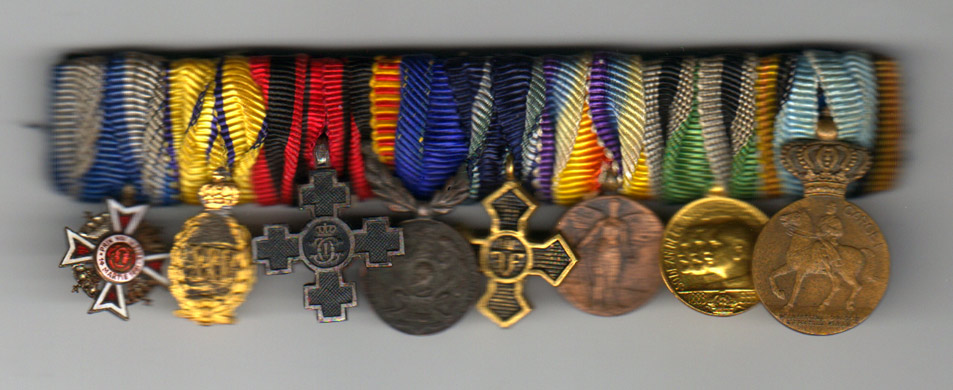 0
0 -
Hi Rob,
That is what I thought might be the case on the one I posted questions on above. I still think there are slight differences on that one from the original that you show.
The problem with the Rumanian VIC's, are so many unofficial ones are out there in original groups due to the problems/limitations with the official mint back then.
Tim
This one was listed recently; nice group!!
Hello Tim,
Last posts for a while.
I would agree that there are always differences in the medals seen on bars. In the case of the full-size bar the victory medal depicted is, in Mr Laslo's parlance, an unofficial type 2; Reverse N variety.
I would also agree that it is a nice full size group.
Regards,
Rob
0 -
To Ed and all,
I recently came across this group to a member of the Sikh Light Infantry. Of interest is that one of the medals is missing and I'm not too sure if it has come adrift from the group or was not yet attached. I noticed on this thread that it seems to be a seemingly regular occurrence to have medals missing from groups.
The details of the individual are: 4444408 Lance Naik Joginder Singh, Sikh Light Infantry
My limited knowledge of Indian medals has identified the group as:
* General Service Medal 1947, Naga Hills
* Pashchimi Star, 1971
* Raksha Medal, 1965 (not present)
* Sangram Medal, 1971
* Sainya Seva Medal - (unsure of the clasp name)
* 25th Independence Anniversary Medal, 1972
* 9 Years Long Service Medal
Do I have these details correct?
Any other information of note, or opinions would be gratefully received.
Regards,
Rob
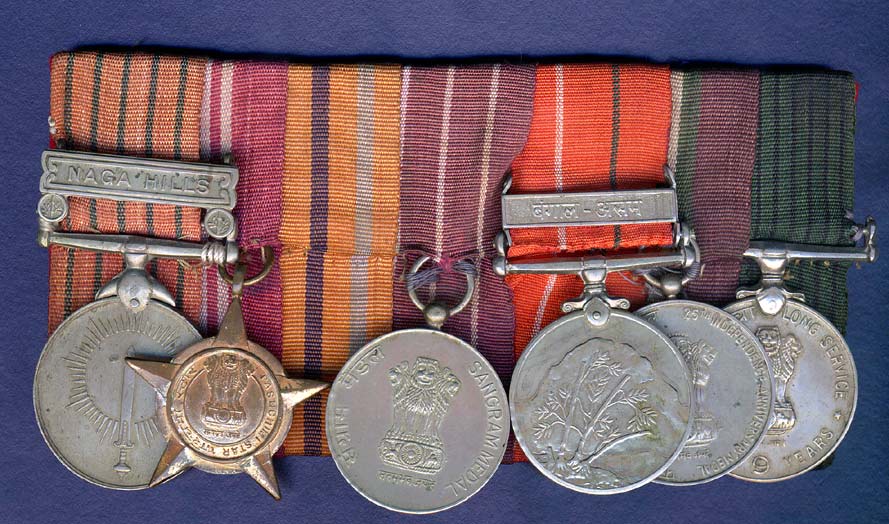 1
1 -
RobW, is that book for sale somewhere?
Hello Herr General,
No it is not. I obtained my copy from a collector friend in Prague a few years ago. I think I may have a second copy which I shall look for when I return to Sydney in a week.
Regards,
Rob
0 -
Here's my Revolutionary Medal.
It's really a nice, solid strike and makes me think there are more than one maker for these, as some appear weaker in details. I still need to find some examples with the various ribbon attachments (unit citations, regiment #'s, and action/battle bars).
Tim
Hello Tim and others,
As everybody serving in Czech legions was eligible for this Cross, many variants were produced. The medal was designed by the French sculptor Antoine Bourdel, and it is his initials 'AB' which can be found on the reverse of some varieties. The Czech medal book referred to previously lists 4 main varieties of which an example is shown. These varieties are:
a. Type 1 – Bronze cross 1918-19, French production, stamped AB.
b. Type 2 – Light bronze 1920-38, with signature.
c. Type 3 – Dark bronze 1920-38, with signature.
d. Type 4 – Bronze 1920-38, without signature.
There are also more varieties indicated but these are unlisted with hollow pieces being described as quite common. The are quite a number of ribbon devices for this medal. The number on the ribbon is the number of the regiment and/or Czech Legion the participant served in. The shields with numbers relate to the following regiments-legions and locations:
a. Russian Legion - 1-12
b. French Legion - 21-24
c. Italian Legion - 31-35 and 39
In addition to the regimental numbers there were a number of named shields and bars that indicated action participation as follows:
a. ČD (Česká Družina or Czech Brigade)
b. L.E. (Légion Étrangère or Foreign Legion).
c. Russian Legion - ZBOROV, BACHMAČ, SIBIŘ.
d. French Legion - ALSACE, ARGONNE, PERONNE.
e. Italian Legion - DOSS' ALTO, PIAVE.
d. Those in Serbia - S or SERBIE.
There are numerous reproductions of these bars with original ones considered quite rare. What complicates matters is that some original manufacturers have also produced recent versions as well so it is quite difficult to differentiate repro from original. I have a couple of Czech groups that have the Revolution Cross with ribbon devices. When I can track them down I shall post pics later.
Regards,
Rob
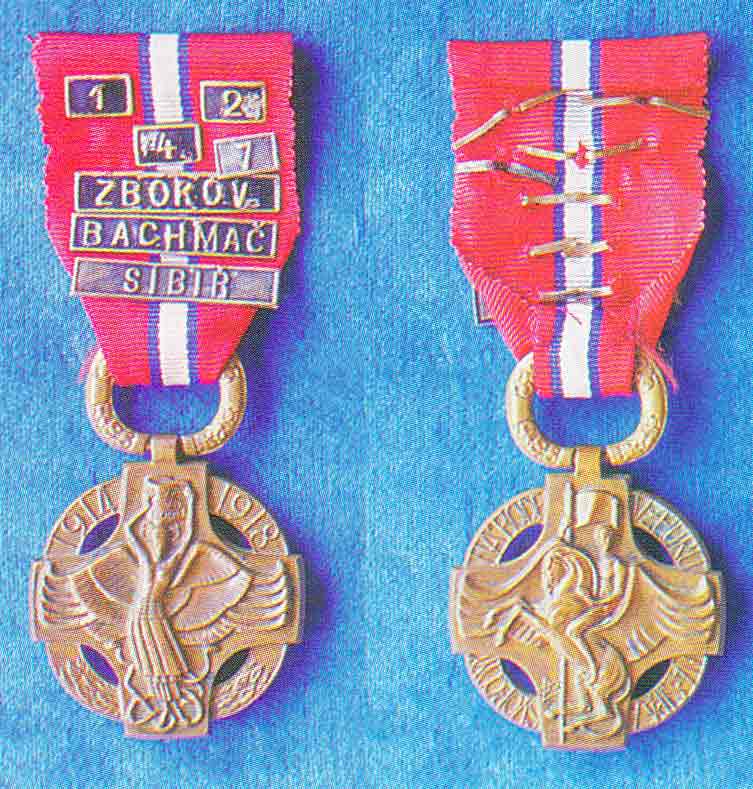 0
0 -
Here's my Revolutionary Medal.
It's really a nice, solid strike and makes me think there are more than one maker for these, as some appear weaker in details. I still need to find some examples with the various ribbon attachments (unit citations, regiment #'s, and action/battle bars).
Tim
Hello Tim,
Some of this information was posted in another forum thread last year but is of relevance here as well.
Some details on the Revolution Cross / Medal and its varieties and myriad of ribbon devices is contained in this handy Czech medals reference. It is in Czech and has numerous pictures and details that would assist the collector.
More details on the Revolution Cross / Medal to follow.
Regards,
Rob
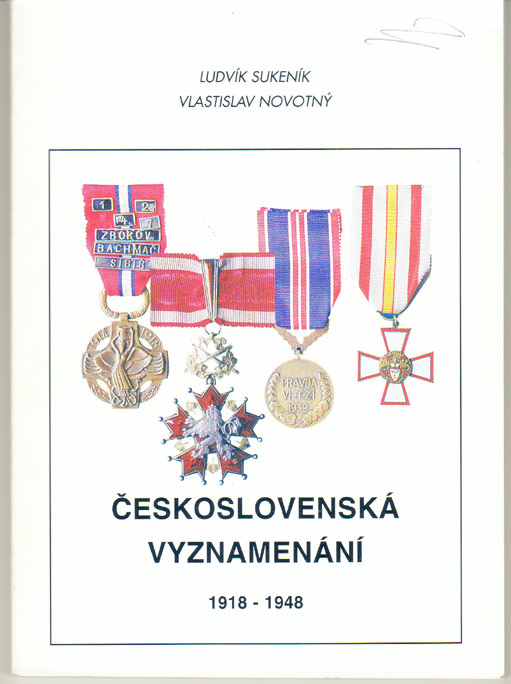 0
0 -
Hello Rob -
Do you know who it belonged to, but if I am to gauge anything about the contributors to this thread it would seem to be more about the individual pieces and their manufacturers, rather than the recipient's details perhaps ?
I would also imagine that these types of medal groups are becoming thin on the ground - maybe due to being split up and sold off as single medals?
regards
Thomas
Hello Thomas,
I don't know who the recipient is, but the combination of awards as well as the two Orders, indicates an officer.
The main research problem that faces collectors of vics generally is that only the commonwealth countries had their medals named, although there are examples of US vics with naming details engraved. As the main thread is vic medals of the world this is the only spot for the variety of other vics to reside, and there are just so many different varieties that are all unnamed so there is a tendency to post the items and their varieties. You will also see that there are not a lot of contributors but many watchers on this thread.
If you have any commonwealth vics I would post them here and also on the Great Britain thread where it is more easy to research the named individual.
You are also correct in identifying that these sort of groups are rarely seen intact anymore. I am currently working on resurrecting a Greek group of 9 that was split apart and individually mounted on a felt board with glue all over the ribbons! What a poor demise for such a group. It may take me a long time to obtain all the required original silk ribbons but it remains a work in progress and it will eventually be re-mounted complete. I have seen dealers that will split a large group if it fails to sell in a rapid time frame and then sell it later for the sum of the parts.
Regards,
Rob
0 -
To all,
Thanks to a very helpful collector friend in Greece and a fellow forum member, I have now obtained this very nice group.
It is an interesting group because it also includes the Cross of Valor which indicates post-war service in the Asia Minor 1919-1922 conflict between Greece and Turkey, as well an unofficial victory medal.
The items, with manufacturing details, include:
* Order of the Redeemer, Knight's Cross (Lemaitre)
* Cross of Valor, (Godet)
* Order of George I, Knight's Cross (R. Souval)
* War Cross, 3rd class (Huguenin Frères)
* Military Merit Medal 3rd class (Sue-Rivaud, Salonique)
* Victory medal, unofficial type 1 (HENRY NOCQ variation)
Regards,
Rob
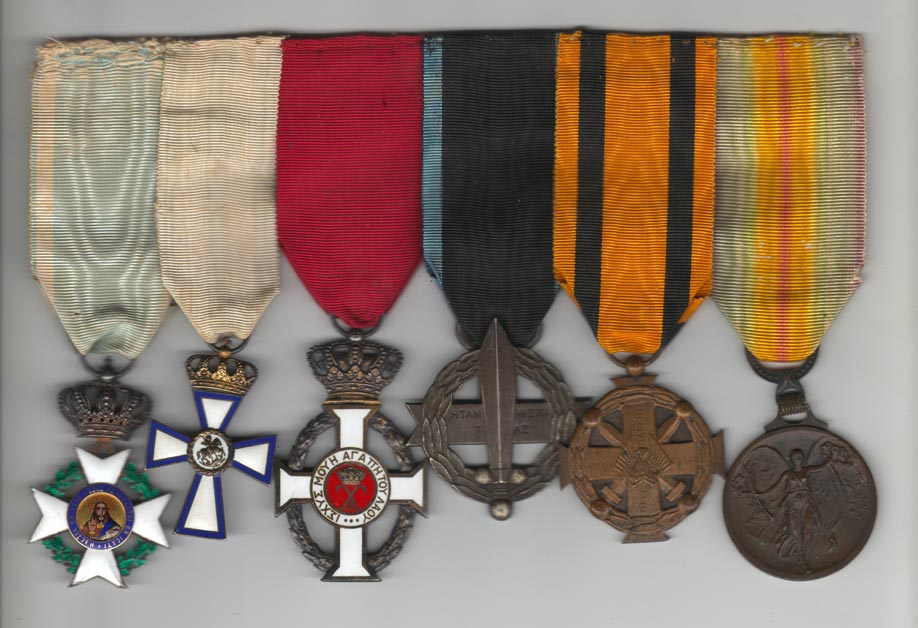 0
0 -
Hello Tim,
I also have another Greek group of 6 but it too has the L.Süe (Sculptor) A.A.Rivaud (Designer) Salonique 1917 mark on the reverse.
Regards,
Rob
Hello Tim,
And here is a close-up of that medal.
Regards,
Rob
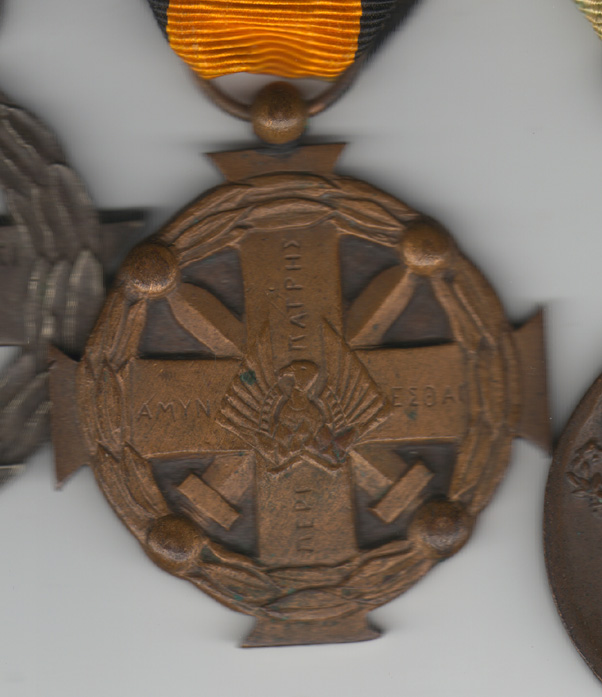 0
0 -
Hi Rob!
Thanks for joining in here and adding those PIC's! Yes, totally agree on the quality of the strike on this maker.
By chance, do you have the Arthus Bertrand example and a close-up of that mark to show here?
Tim

Hey Tim,
When I have time I shall scour the boxes to look for the item and will post pics when I find it.
Regards,
Rob
0 -
And the mark itself.
I am hopeful that someone more knowledgeable can identify this maker.
Regards,
Rob
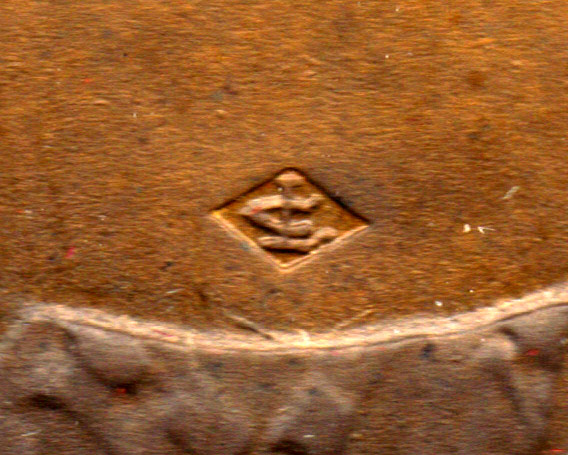 0
0 -
And here is the close-up of the reverse.
Regards,
Rob
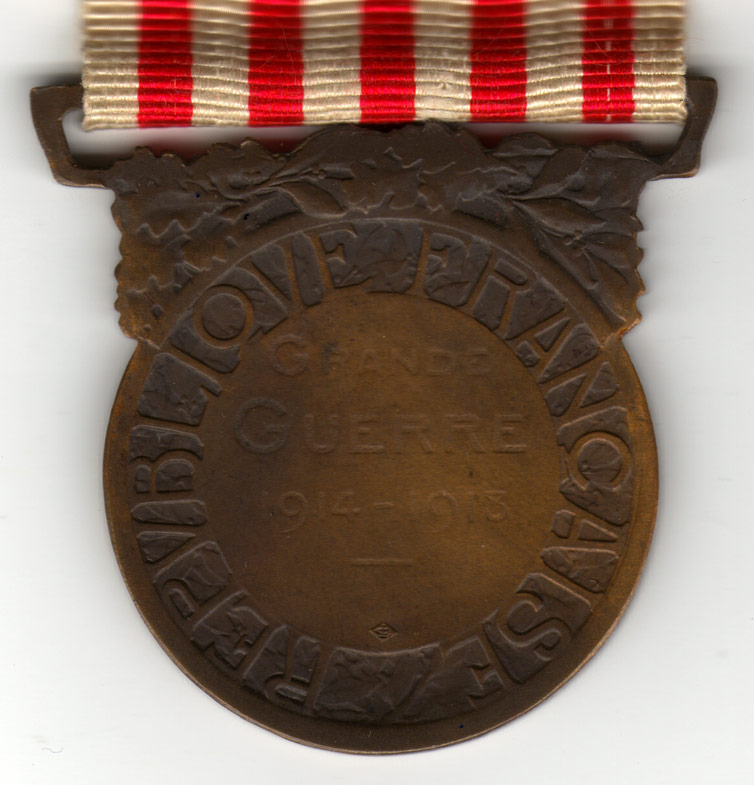 0
0 -
Okay, does anyone have a clue on the maker here?
Tim
Hello Tim,
I don't have any ideas as to the maker but here is one of my War Commemorative Medals with the same makers mark. It also has an 'Engagé Volontaire' bar as well. Out of all my French medals I find this particular medal quite appealing and such a lovely design. For some reason this strike is much better and definitive than the examples that I have from the Paris Mint, Janvier-Berchot and Arthus Bertrand. Such a simple and elegant design.
Close-ups of the reverse and mark itself to follow.
Regards,
Rob
 0
0 -
Okay, just a last Monnaie example on a WWI Volunteer Combattant Cross. Not as worn down as most, but the flowers in the cornucopia just don't show up in the PIC.
Tim
Hello Tim,
Late to this party it would seem...
Here is another cornucopia mark. This time it is conjunction with the letter 'M' [Monnaie de Paris] on the reverse of an 'Engagé Volontaire' silver bar attached to one of my French War Commemorative Medals, so it would appear that the mint marked more than just their medals. In this picture the bar has been rotated 90 degrees.
I hope it adds to the previous items.
Regards,
Rob
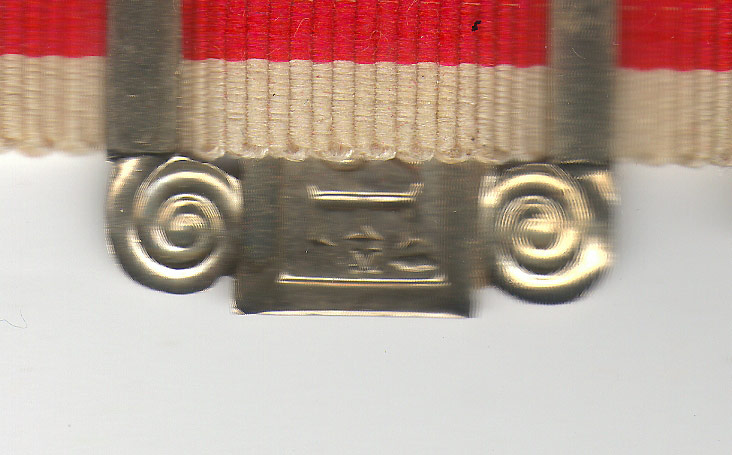 0
0 -
Well, you guys don't talk much here, do you?

Thought I would put up my first pickup in this area: Cased 4th Class by ANAGNOSTOPOULOS.
Virtually mint condition! It's a start.

Tim
Hello Tim,
I would add the example from my Greek group of 9 but I see that the pic has already been posted.
I also have another Greek group of 6 but it too has the L.Süe (Sculptor) A.A.Rivaud (Designer) Salonique 1917 mark on the reverse.
Regards,
Rob
0 -
This one is actually pretty hard task. Here is the aditional identification. Any help would be great

Order of Military Merit - "Created February 27, 1912 primarily as an award for outstanding military merit, but can be awarded for other services and comes in four classes.
Hello Timo,
Here is one of my vic groups, from cuba. It has already been posted on the vic thread but it has pieces of relevance to this topic as well.
The group is:
* Order of Military Merit 4th class cross, with dark red enamel.
* Long Service medal, with 5 chevron devices.
* Unofficial Cuban victory medal.
* National Reconciliation medal, with 1 star device.
I would agree that the Long Service Medal has chevrons on the medal ribbon but I have also seen other ribbon bars with the stars as per your example.
Hope this helps.
Regards,
Rob
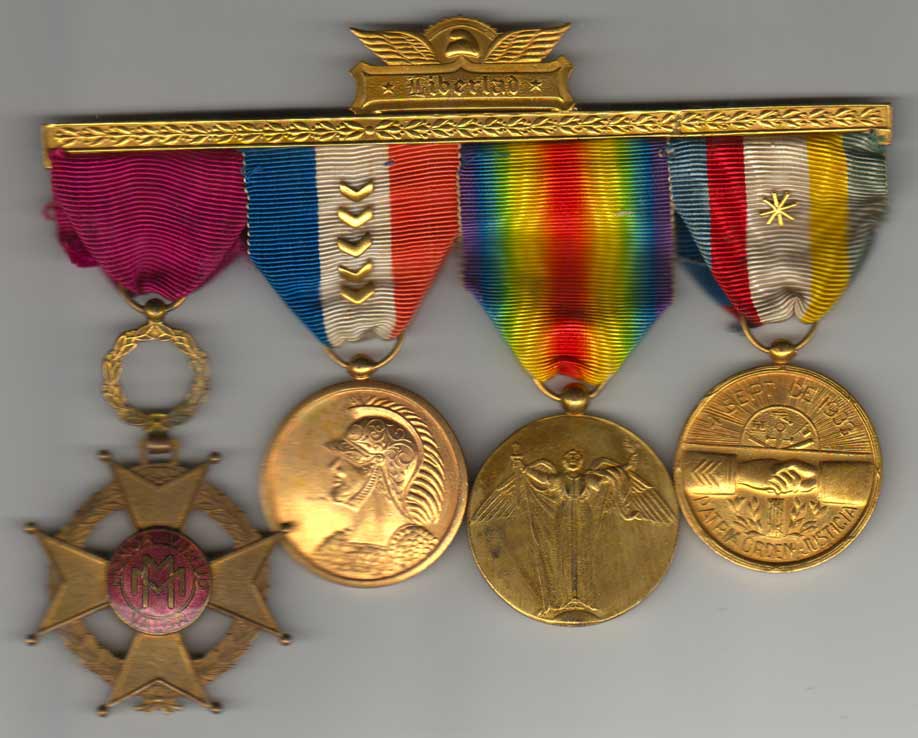 0
0 -
Changing subject for moment
To all,
Need a little help here,
This is my own Navy medal (A) and as you can see it has an official ribbon and clasp. Also you can see that the thread colors flow continuously from one side to the other and it shows proper aging.
But, (B) I have been seeing more and more of this broken thread type ribbon on Vic's with official clasps on them. All example I have seen show corner wear but not true aging.
My question is, is there any info on this ribbon.
Thanks Johnnymac (JM)
Hello JM,
I don't believe that there is too much to the differences in the ribbons. If the medal has the correct bar / clasp, and it is correctly fixed, the medal has the correct purple thread at the top affixing the ribbon to the brooch and the brooch is the correct type I would say all is good. Considering the vast scale of production of this medal, in in the large quantities of US vics that were produced I would suggest that some variations in the ribbons used would be inevitable.
The way I view it is if the whole package looks okay, (medal, ribbon, bar / clasps, and brooch) and the wear is consistent then I am happy. Just my 2c.
Regards,
Rob
0 -
Hi guys!
Thanks for the close-ups Rob, that will help as there is only one die to really compare originals to.
JM, that is a good reference to have!!
The problem of poor seller's PIC's will still be the remaining issue here but, I now have a little more to use for comparisons. Again, many thanks!!

Tim
Hello Tim,
I would wholeheartedly agree that having good quality close-up pictures of the obverse and reverse of the official strikes is very handy. It aids in identifying the official pieces against the myriad of unofficial and subsequent reproduction pieces.
I am hopeful that other vic collectors will also post good close-ups of their pieces for the rest of the collecting fraternity to view and use and to compare.
In specific reference to the Rom vic there are a few strikes that were produced by different French manufacturers that closely resemble the official strike so it does pay to have a confirmed official close up pic to compare.
Regards,
Rob
0 -
3. Romania
Hello Noor,
Thanks for the very useful and handy updates to ribbon bars on thread. The vic medals are one thing but the actual ribbon bars always speak to the collector as well.
Regards,
Rob
0




American (US) Victory Medals
in Inter-Allied Victory Medals of the Great War
Posted · Edited by RobW
Hello Tim,
I would agree that both matrices from Nixon and Laslo are good for illustrating qualifying unit at the Divisional level but for anything other than that more research and digging is required. I also am aware that, in addition to the errata added to the 'Battle Participation' reference, at the time of publication in 1920, many more minor amendments were made until at least the late 1930s. Where these amendments are recorded are anyones guess. Of course all the qualifying credit applies to individuals and not units so it is not all too uncommon for a specific individual to have moved around and hence become qualified for other clasps.
I have an enlarged cobbled together listing of units and sub-units and clasp entitlement but it is not suitable for anything but the most cursory and initial searches.
In addition to the 'Battle Participation' reference I also use:
* Order of Battle of the US Land Forces in the World War, AEF: Divisions. 1931. This has cronologies of operations and movements.
* The History of the AEF by Shipley Thomas, 1920. This volume also provides a short synopsis of each Division and has a good level of detail.
This at least helps me narrow down the possible circumstances of a difference or variation in battle clasp entitlement.
Regards,
Rob